The Syntax of City Space: American Urban Grids by Mark David Major with Foreword by Ruth Conroy Dalton (co-editor of Take One Building) is now available for pre-order from Routledge, Amazon, and other online retailers. Routledge/Taylor & Francis Group will release The Syntax of City Space: American Urban Grids in November 2017.
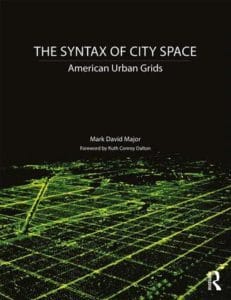 Many people see American cities as a radical departure in the history of town planning because of their planned nature based on the geometrical division of the land. However, other cities of the world also began as planned towns with geometric layouts so American cities are not unique. Why did the regular grid come to so pervasively characterize American urbanism? Are American cities really so different?
Many people see American cities as a radical departure in the history of town planning because of their planned nature based on the geometrical division of the land. However, other cities of the world also began as planned towns with geometric layouts so American cities are not unique. Why did the regular grid come to so pervasively characterize American urbanism? Are American cities really so different?
The Syntax of City Space: American Urban Grids by Mark David Major with Foreword by Ruth Conroy Dalton (co-editor of Take One Building) answers these questions and much more by exploring the urban morphology of American cities. It argues American cities do represent a radical departure in the history of town planning while, simultaneously, still being subject to the same processes linking the urban network and function found in other types of cities around the world.  A historical preference for regularity in town planning had a profound influence on American urbanism, which endures to this day.
A historical preference for regularity in town planning had a profound influence on American urbanism, which endures to this day.
Download the Routledge/Taylor & Francis Group European promotional flyer here.
The Syntax of City Space: American Urban Grids is available for pre-order purchase with Routledge/Taylor & Francis Group, Amazon, Waterstones, and Foyles in the UK as well as other online retailers around the world.
Visit our Books for Sale page here.
About the Author
Dr. Mark David Major, AICP, CNU-A is an Assistant Professor of Architecture and Urban Design at Qatar University in Doha, Qatar. He is a graduate of Clemson University, University College London, and the University of London.
The Syntax of City Space: American Urban Grids
by Mark David Major with Foreword by Ruth Conroy Dalton
Hardcover, English, 260 pages
Routledge, First Edition (November 2017)
ISBN-10: 1138301566
ISBN-13: 978-1138301566
Purchase from Routledge/Taylor & Francis here.
Purchase from Amazon here.
Purchase from Waterstones here.
Purchase from Foyles here.


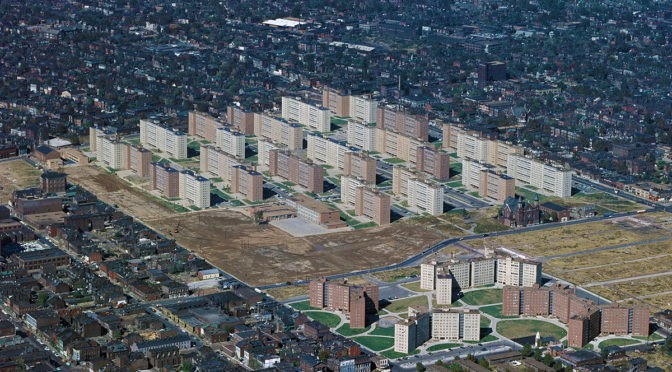
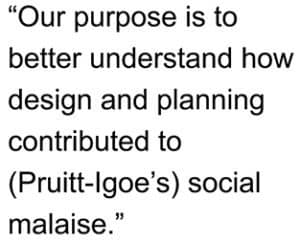 Our purpose is to better understand how design and planning contributed to its social malaise. It concludes: 1) provision of space (i.e. quantity) became a liability as declining occupancy generated a ‘broken interface’ between adults and children; and, 2) the pilotis of the residential towers mediated formal access and spatial distribution in a layout characterized by ‘intelligible dysfunction,’ which facilitated opportunity and escape for criminal activities. Both fed the perception and reality of social malaise at Pruitt-Igoe (2.5 hour course). Click
Our purpose is to better understand how design and planning contributed to its social malaise. It concludes: 1) provision of space (i.e. quantity) became a liability as declining occupancy generated a ‘broken interface’ between adults and children; and, 2) the pilotis of the residential towers mediated formal access and spatial distribution in a layout characterized by ‘intelligible dysfunction,’ which facilitated opportunity and escape for criminal activities. Both fed the perception and reality of social malaise at Pruitt-Igoe (2.5 hour course). Click 

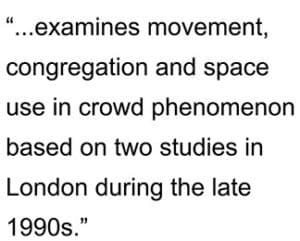 Second, many crowd characteristics often represent only a dramatic, temporary intensification of everyday circumstances in urban conditions, which has implications for recent pedestrian-oriented design concepts such as shared space (2.0 hour course).
Second, many crowd characteristics often represent only a dramatic, temporary intensification of everyday circumstances in urban conditions, which has implications for recent pedestrian-oriented design concepts such as shared space (2.0 hour course).
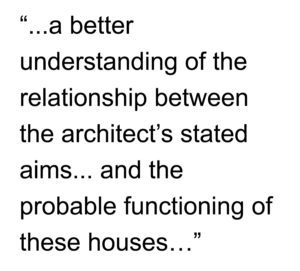 In particular, this includes the effect in structuring the relationships, if any, between public (e.g. everyday living) and private (e.g. bedrooms) functions as well as the household interface between inhabitants and visitors. The course offers a better understanding of the relationship between the architect’s stated aims in his own theoretical writings and the probable functioning of these houses as architectural objects (1.0 hour course).
In particular, this includes the effect in structuring the relationships, if any, between public (e.g. everyday living) and private (e.g. bedrooms) functions as well as the household interface between inhabitants and visitors. The course offers a better understanding of the relationship between the architect’s stated aims in his own theoretical writings and the probable functioning of these houses as architectural objects (1.0 hour course).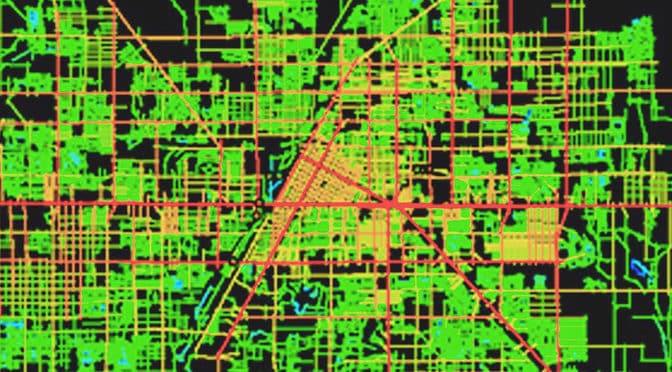
 The course covers the financial, institutional, and legal hurdles/pitfalls confronting space syntax in the American market, especially in the private sector. Using a series of ‘back-of-the-napkin’ financial calculations common to the American development process, the course demonstrates how these challenges can transform into a distinct advantage for advocating the cause of the space syntax in the United States. The course concludes by discussing the enormous challenges and opportunities for space syntax in America today (1.0 hour course).
The course covers the financial, institutional, and legal hurdles/pitfalls confronting space syntax in the American market, especially in the private sector. Using a series of ‘back-of-the-napkin’ financial calculations common to the American development process, the course demonstrates how these challenges can transform into a distinct advantage for advocating the cause of the space syntax in the United States. The course concludes by discussing the enormous challenges and opportunities for space syntax in America today (1.0 hour course).